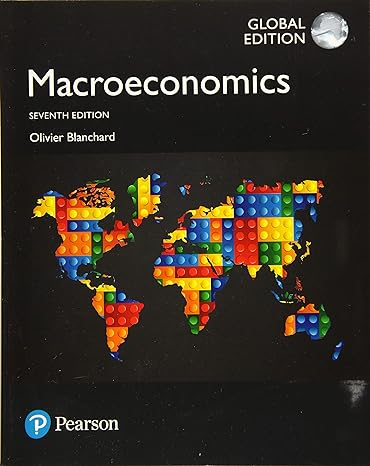The medium-run equilibrium is characterized by four conditions: Output is equal to potential output (Y=Y_{n}). The unemployment
Question:
The medium-run equilibrium is characterized by four conditions:
Output is equal to potential output \(Y=Y_{n}\).
The unemployment rate is equal to the natural rate \(u=u_{n}\).
The real policy interest rate is equal to the natural rate of interest \(r_{n}\) where aggregate demand equals \(Y_{n}\)
The expected rate of inflation \(\pi^{e}\) is equal to the actual rate of inflation \(\pi\).
a. If the level of expected inflation is formed so \(\pi^{e}\) equals \(\pi(-1)\), characterize the behavior of inflation in a mediumrun equilibrium.
b. If the level of expected inflation is \(\bar{\pi}\), what is the level of actual inflation in the medium-run equilibrium?
c. Write the \(I S\) relation as \(Y=C(Y-T)+I(Y, r+x)+G\). Suppose \(r_{n}\) is \(2 \%\). If \(x\) increases from 3 to \(5 \%\), how must the central bank change \(r_{n}\) to maintain the existing mediumrun equilibrium. Explain in words.
d. Suppose \(G\) increases. How must the central bank change \(r_{n}\) to maintain the existing medium-run equilibrium? Explain in words.
e. Suppose \(T\) decreases. How must the central bank change \(r_{n}\) to maintain the existing medium-run equilibrium? Explain in words.
f. Discuss: In the medium run, a fiscal expansion leads to an increase in the natural rate of interest.
Step by Step Answer:






